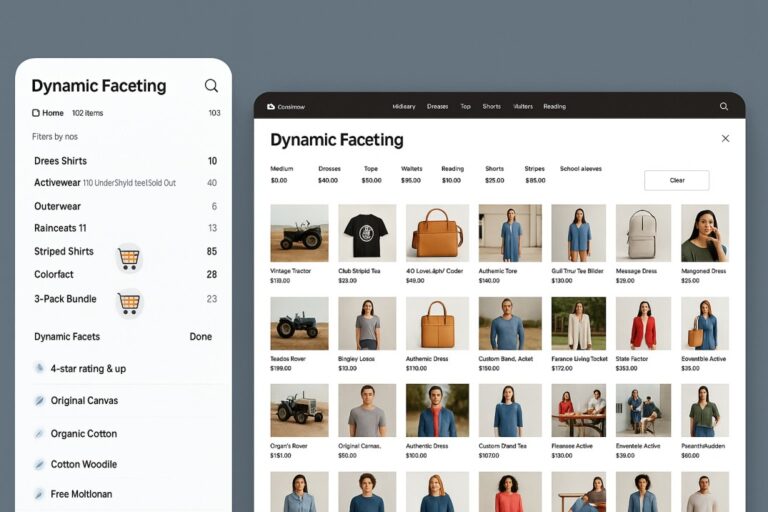Site search is often merely a checkbox on a to-do list for firms. Visitors frequently consider it a little area they type in their searches. Brands that don’t fully utilize site search may lose the game due to greater consumer expectations and the harder-than-ever competition in the acquisition market. Nearly 30% of all visitors utilize site search to discover their chosen goods.
Site search is a powerful tool that may increase conversions and improve customer satisfaction for your online business. However, you can only do this if you have an installed intelligent site search. Related search, intelligent suggestions, statistics, and more are all part of a smart site search. When all of these items are put together, they may significantly improve your online business and provide you with extensive information on your customers’ behavior. Using this data effectively may help you gain a competitive edge and retain customers.
The Benefits of Light Site Search

Let’s look into the benefits that you will get from an effective search engine.
Facilitates Product Discovery for Customers:
The demands of clients do vary. If you don’t immediately meet their expectations, they’ll depart and go to your rival’s website. Customers anticipate quick results, comfort, and simplicity of buying since they have little tolerance or time. Users’ expectations of a search bar have been conditioned by Google and Amazon searches. In other words, if your search engine can’t offer relevant results and satisfying user experiences, people will turn to your rivals who can.
Attracts Potential Customers:
Comparatively to those who use regular navigation, people who utilize search have a clear desire to purchase when they type the names of the products they wish to learn more about. The customer has finished gathering information, has located the website, and is currently looking for a certain item. They are usually at the very end of the purchasing process and are simply checking to ensure other factors like price, warranty, and shipping costs are considered.
Helps in Understanding Users’ Buying Habits and Wants:
A great site search may gather priceless information about what customers are looking for and how they interact with your website. Using this data, you may generate analytical reports showing which products are getting more or less popular, allowing you to adjust your marketing strategies accordingly. You can learn what your customers wished you could have sold them. You might think about adding certain brands or goods to your inventory if you notice an increase in searches for them.
Improving Conversion Rate:
Businesses may make it easier for customers to locate the things they’re looking for by providing a user-friendly site search experience. Visitors are given control over their own buying experience, which fosters a loyalty-boosting environment. They are more likely to convert as a result and visit the eCommerce store again to make more purchases.
Tips to Make a Good and Light Search Engine

Making it Simple to Find:
Make it simple to discover. Although it may sound very basic, it is vital. You may lose 30% of sales if users can’t find the search bar. Users should be able to discover it easily when they land on a page and glance around—it doesn’t necessarily need to be huge or bold.
Setting the Search Box’s Location:
The user’s choice to utilize the site’s search box for hunting for items may be influenced by the search box’s placement. All website areas should have simple navigation, including the site search boxes. This allows visitors to navigate the site quickly, regardless of the page they end up on.
Make Sure it Functions and is Quick:
The number of visitors who purchase from your website and the load time is related. For search results, the same holds. Profit declines as load times rise. Run tests to ensure your load time is adequate, and check how long it takes to load on mobile devices. To decrease this load time, a light search engine is needed.
Make Search Recommendations:
The visitor will be encouraged or prompted to look for anything on your website if you provide suggestive language in your search box, but keep your tips to a few words.
An example search query not only offers them ideas but also clarifies what they may lookup on your website and how many search parameters are accessible.
Include a Search Field on Each Page:
It will be simpler for users to search if the search box appears in the same location on every page (apart from the checkout page). Customers will be accustomed to your website and feel at ease when searching if you consistently employ the same menu design, colors, and fonts.
Remember the Mobile Users:
Make sure that the layout of each web page is appropriate for users accessing your site from a desktop, smartphone, or tablet. For instance, responsive design enables customers to utilize and navigate your eCommerce site across various devices without losing out on crucial features or savings.
The most popular platform to begin a search is mobile, frequently where the consumer journey starts.
Concentrate on Your Target Group:
Imagine yourself perusing an eCommerce site in search of a product you know is available, but your search turns out not to be found. That’s annoying.
A good site search expedites the journey of a visitor who uses the search feature on your website since they are already interested in your eCommerce business and what you have to offer.
You might argue that site search is your audience communicating their needs to you, but you can better understand your target market and enhance your online shop by it.
The Takeaway
Most modern consumers are quite certain of what they want. It’s your responsibility to remove any obstacles that could prevent them from finding it. Make the process of helping them find products easy by encouraging them to utilize the search function. The benefits of using the procedures above may make it seem daunting, but it is worthwhile. Therefore, buy a light search engine right now to enhance user experience, increase customer retention, and increase brand loyalty.
Add great search to your website




